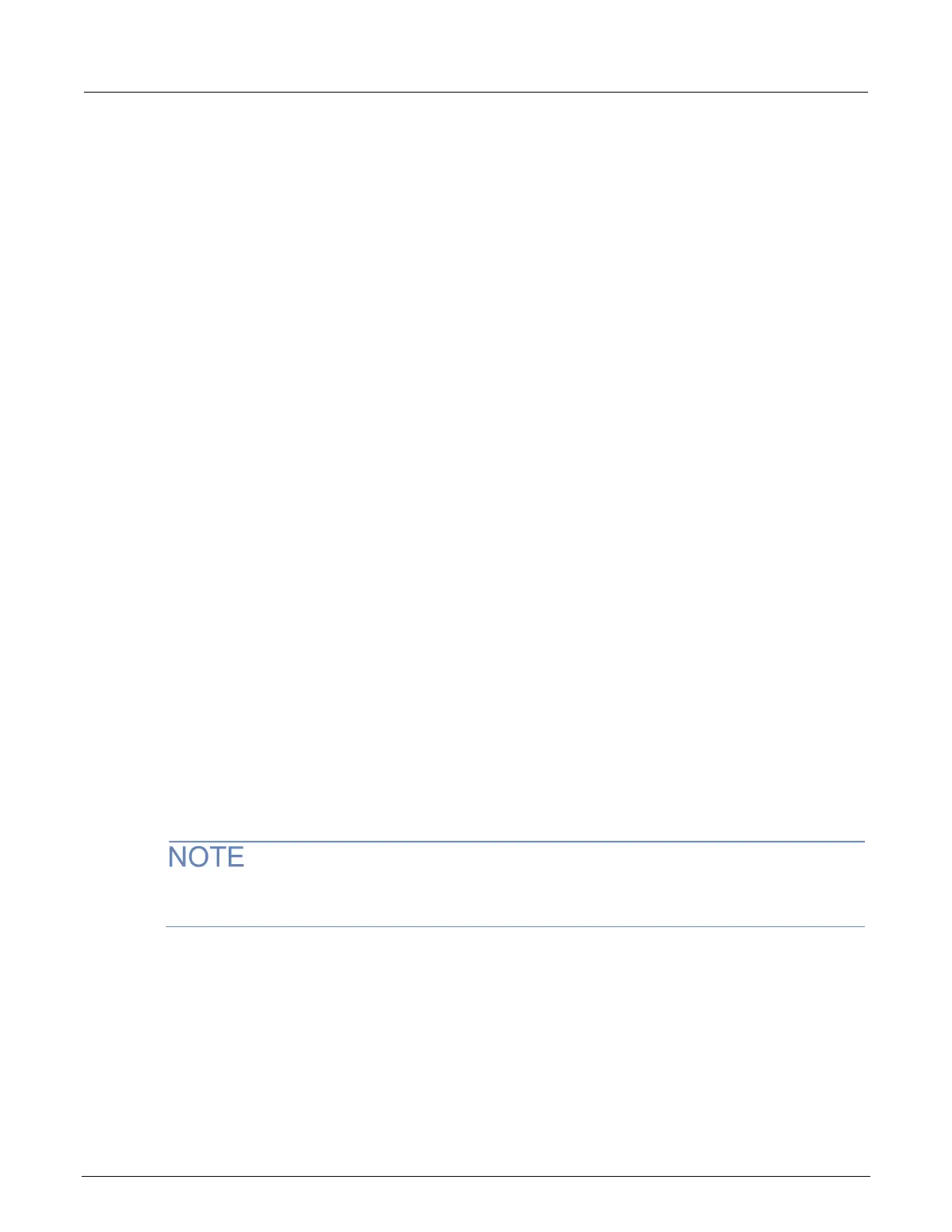-SCS Pulse Card (PGU and PMU) User's Manual Section 4:
4200A-PMU-900-01 Rev. B March 2023 4-11
Pulse I-V (spot mean)
The maximum number of samples per A/D per test is <1,000,000 (one million). If an ITM is configured
to yield more than one million samples, Clarius automatically lowers the sampling rate. For pulse I-V
(spot mean), typically the sample rate is reduced only if the measure window is wide (due to a wide
pulse width or period) or if the number of pulses is large.
The total number of samples for a test is calculated as follows:
Number of samples = Measure window x Sample rate × Number of pulses × Sweep points × Step
points
Example: Test that uses a single PMU to perform 50 20-step sweeps
Pulse width = ~7 μs
Measure window = 1 μs
Sample rate = 200e6 samples per second
Number of pulses = 50
Number of steps in sweep = 20
The number of samples acquired for the above example is calculated as follows:
Number of samples = 1 μs x 200e6 x 50 x 20 = 200,000
Because the number of samples is less than the one million sample limit, the sample rate of 200e6
samples per second is used for the above example.
Segment Arb waveform
Each channel of a pulse card can be configured to output its own unique Segment Arb
®
waveform. A
Segment Arb waveform is composed of user-defined line segments, up to 2048 for the 4220-PGU
and 4225-PMU. Each segment can have a unique time interval, start value, stop value, output trigger
level (TTL high or low) and output relay state (open or closed).
If both channels of a pulse card are being used, the segment trigger levels for Channel 1 will be seen
at the TRIGGER OUT connector. The trigger levels for Channel 2 are ignored.
A Segment Arb waveform consists of line segments illustrated in the figure below. The blue line
represents the voltage waveform; the red represents the measure windows. This figure contains a
12-segment waveform.
